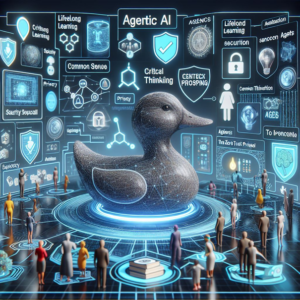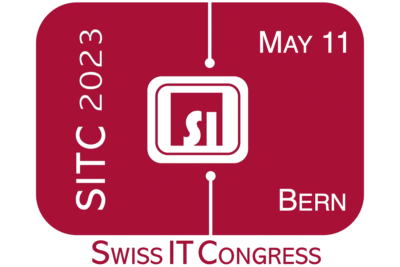The information and communications technology (ICT) sector is one of the largest industries in Switzerland. The driving force behind this sustained growth is the digital transformation. It is constantly creating new trends that can be used to further optimize and expand business. The rule here is that whoever implements the developments first often makes the highest sales and is seen as a pioneer. However, small and medium-sized ICT companies in particular lack the time for continuous innovation management.
The solution to this challenge is again technology. More specifically, reliable software that not only talks about trends, but also implements them. An example of this are enterprise resource planning systems that quickly provide the appropriate functions via the cloud to realize trends such as automation, mobility or the Internet of Things, for example, and thus set the course for future business. What modern ERP systems from the cloud should deliver and what added value they offer is explained in the article by David Lauchenauer, Managing Director and shareholder of the myfactory Group.
Automation: Developing products
Whether online or offline – customer data is the new currency for companies. Used correctly, they help the ICT industry to determine a holistic customer picture. The prerequisite for this 360-degree view is the central and, above all, automated storage of data. However, this does not just mean contact data, but all interactions between seller and buyer. Only those who have all the information on a contact person in one place can provide their customers with sustainable and holistic support.
Customers no longer use just one channel to make contact, as they did a few years ago, but several. Whether mail, web form or telephone – customers interact with the company at various touchpoints. The automatic contact system is needed to ensure that support staff can see not only the telephone history but also all e-mails when they receive a call. It assigns all communication to a contact person. This saves time and gives everyone with authorization the opportunity to view all activities. What’s more, thanks to the holistic customer picture, product development can now take a close look at customers’ wishes and needs and use them to develop new products and services.
Mobility: Improving the shopping experience
Online retail is putting more and more pressure on brick-and-mortar stores. For this reason, many small and medium-sized companies are considering how to attract customers to their stores. Digitization of the point of sale is playing an increasingly important role here. One example is mobile checkout management – for example, via tablet. Sales staff can use it to enter items and at the same time accompany the customer in the store or warehouse. Items are entered by typing or selecting an image.
In wholesale in particular, this allows customers to be advised without interruption. This benefits both sides: The customer advisor gets more time for support and has less effort typing in the selected goods. Customers, on the other hand, benefit from an optimized shopping experience that also strengthens customer loyalty. The checkout process then takes place at the point of sale and is integrated thanks to interfaces between business software and checkout hardware.
Internet of Things: Expanding business models
Networking plays a crucial role in the ICT industry. An important driver of this is the Internet of Things (IoT), i.e., the linking of different devices via the Internet. A central role is played by sensors installed in devices, which can measure inventory levels, for example, but also the condition of products – and do so in real time. The measured data is then sent via the web to the connected systems, such as the ERP system. There, either a reaction is triggered automatically or an employee checks the value and initiates the next steps.
An example: An IT company manufactures high-performance computers. To expand its business, it wants to offer a repair service. Therefore, the manufacturer equips its products with advanced sensors that send a ticket to the ERP system in case of runtime problems. Now, customer service decides on the basis of the data whether and how best to respond. Further automated processes then send the customer e-mails with the error message and suggestions for maintenance dates, for example.
Cyber security: ensuring data protection
Whether automation, mobility or IoT – all trends have to do directly or indirectly with customer data. Therefore, this information needs special protection. Above all, companies and businesses that maintain trade relations with Europe must comply with the data protection rules there. Here, too, systems from the cloud can help: To help companies implement the European General Data Protection Regulation (DSGVO), ERP manufacturers rely on anonymization assistants, for example. Behind this is the irrevocable overwriting of personal data. This forms the technical and organizational basis for compliance with data protection.
In addition, some manufacturers offer new tools for implementing the retention period. In the case of sales documents and contracts, this recognizes whether a matching data record has a valid retention period or not. With these functions, companies are not only on the safe side legally, but also in terms of admin effort. This is reduced and in turn frees up time to devote to day-to-day business or further optimization opportunities.
Conclusion: Innovative companies need innovative software
Digitalization demands speed. This also applies to the implementation of current trends and developments. This applies not only to ICT companies, but also to the software they use. Above all, the solutions must be mobile, flexible, scalable and reliable in order to make users’ work easier and offer customers added value.
When selecting the right provider, companies should check which trend is the most important for them and whether the existing system already serves it. If this is not the case, the first step is to define requirements, which can then be used to find the right partner. The more time that is spent on this preliminary consideration, the lower the probability of bad investments and the greater the chance of investing in future growth.









